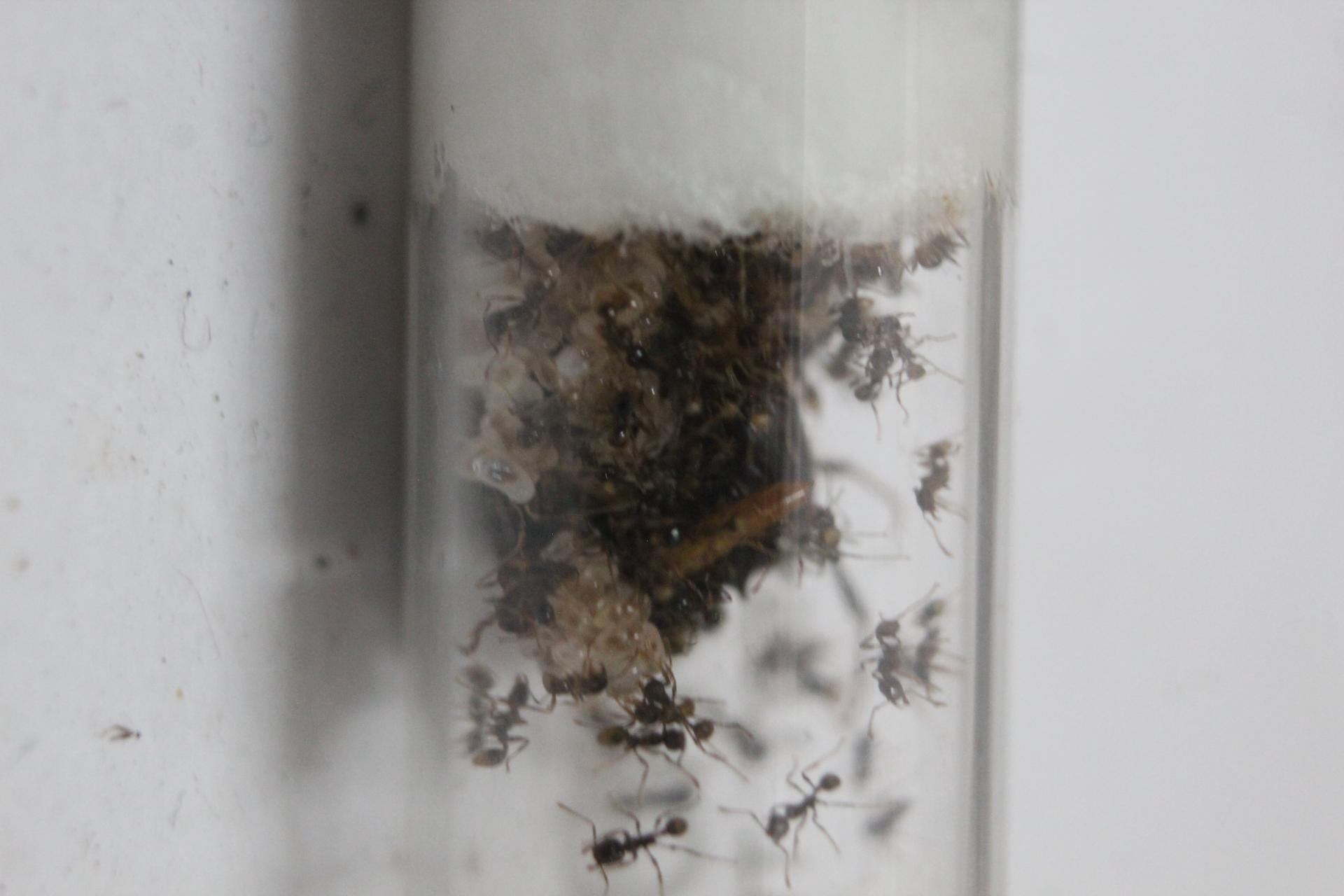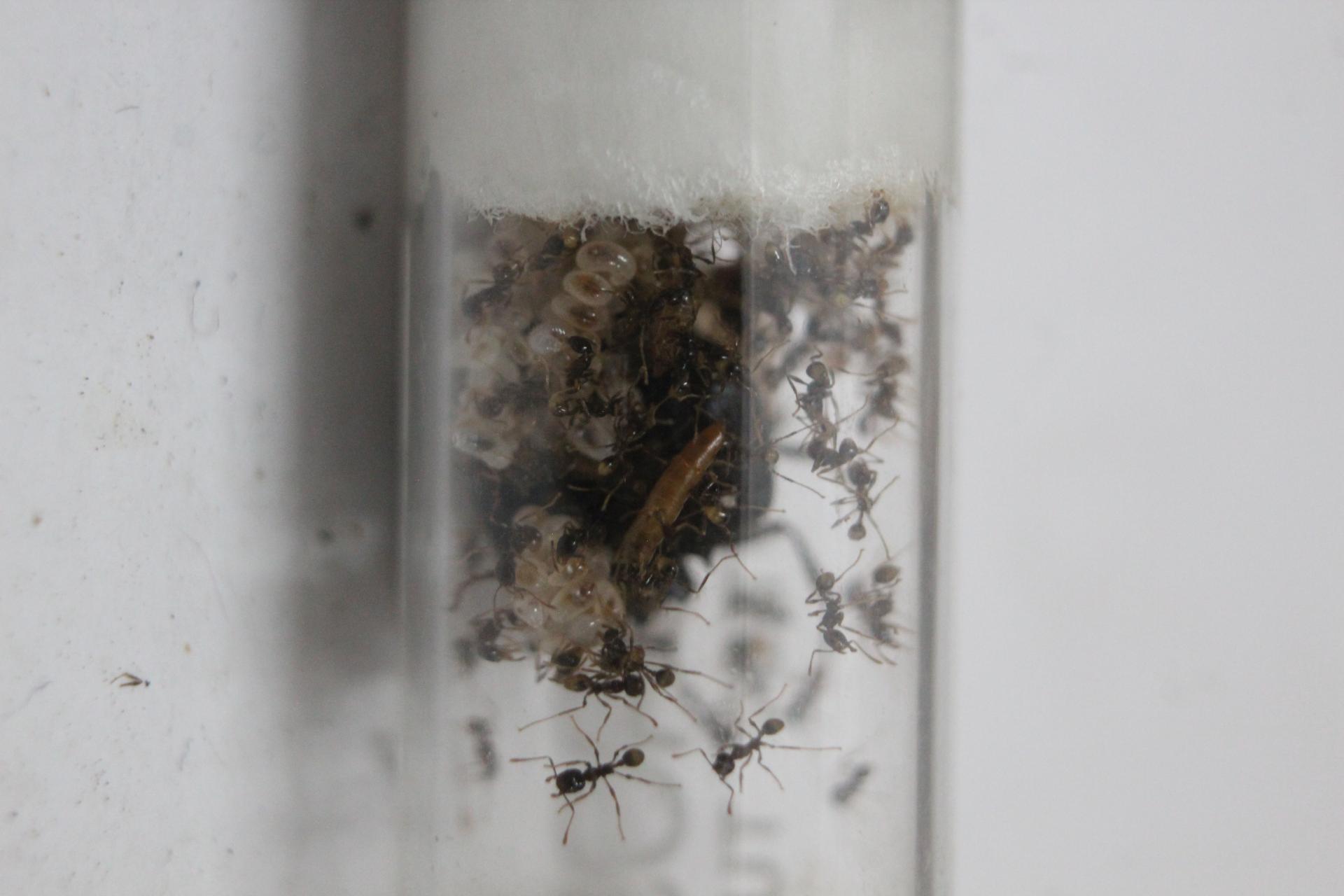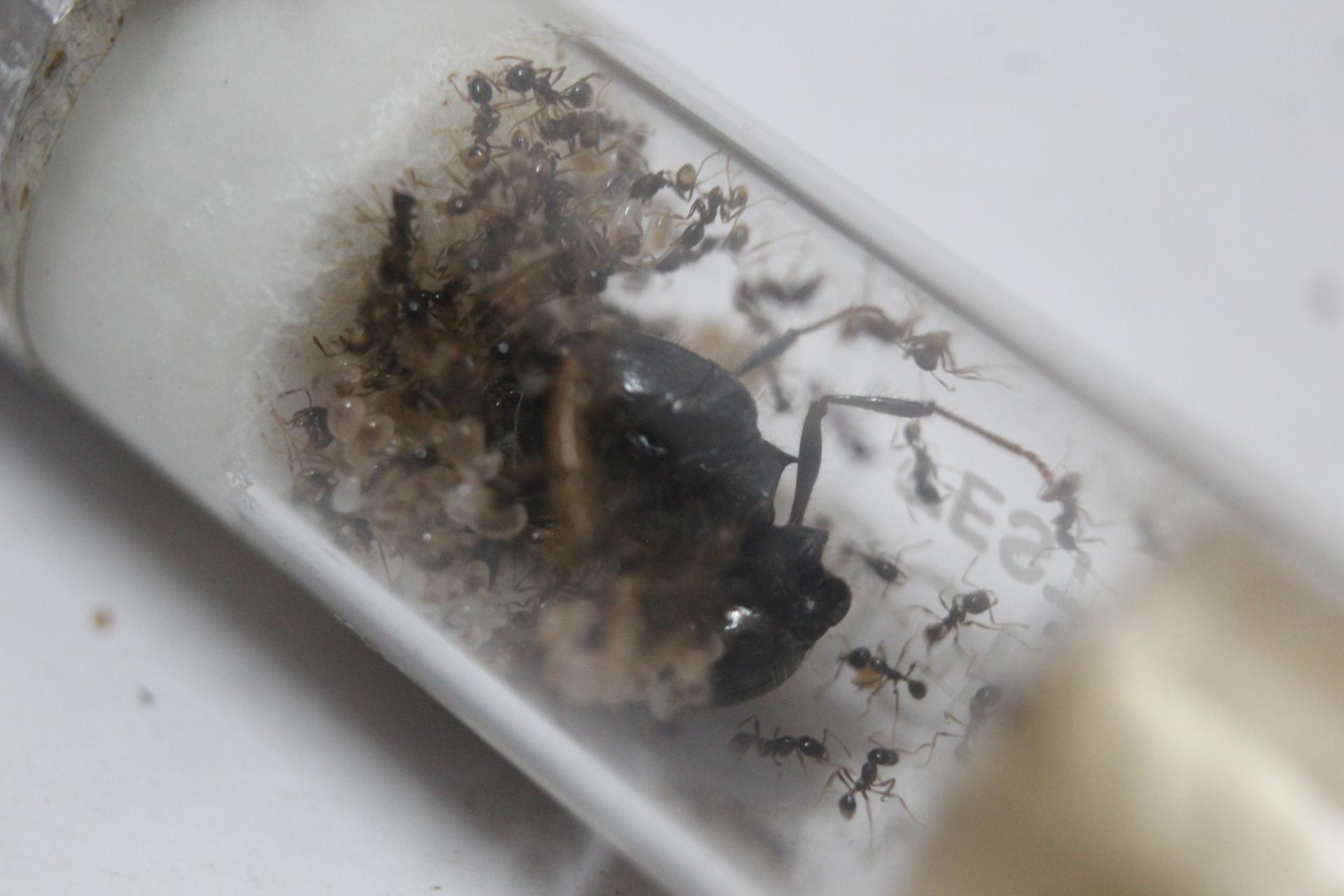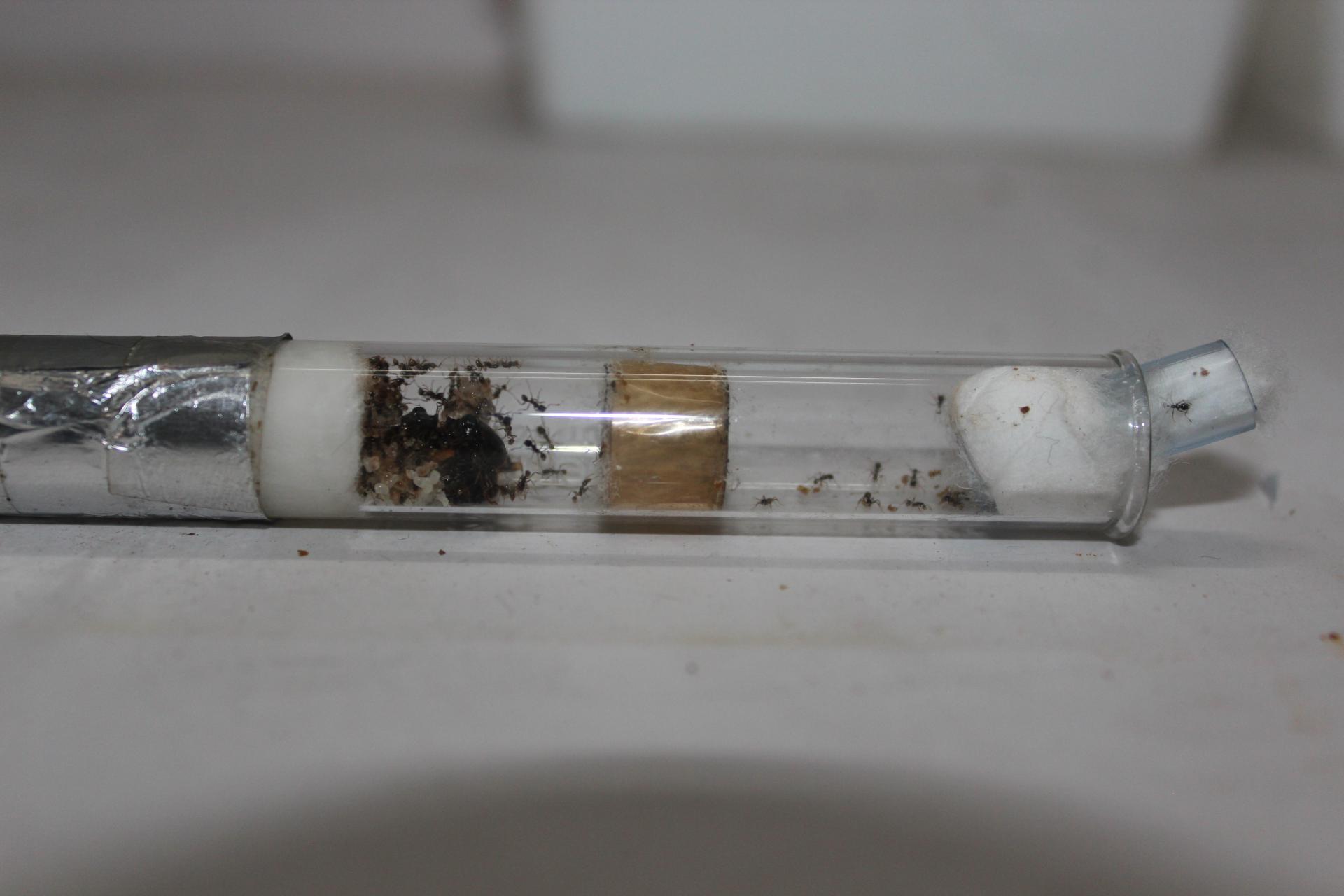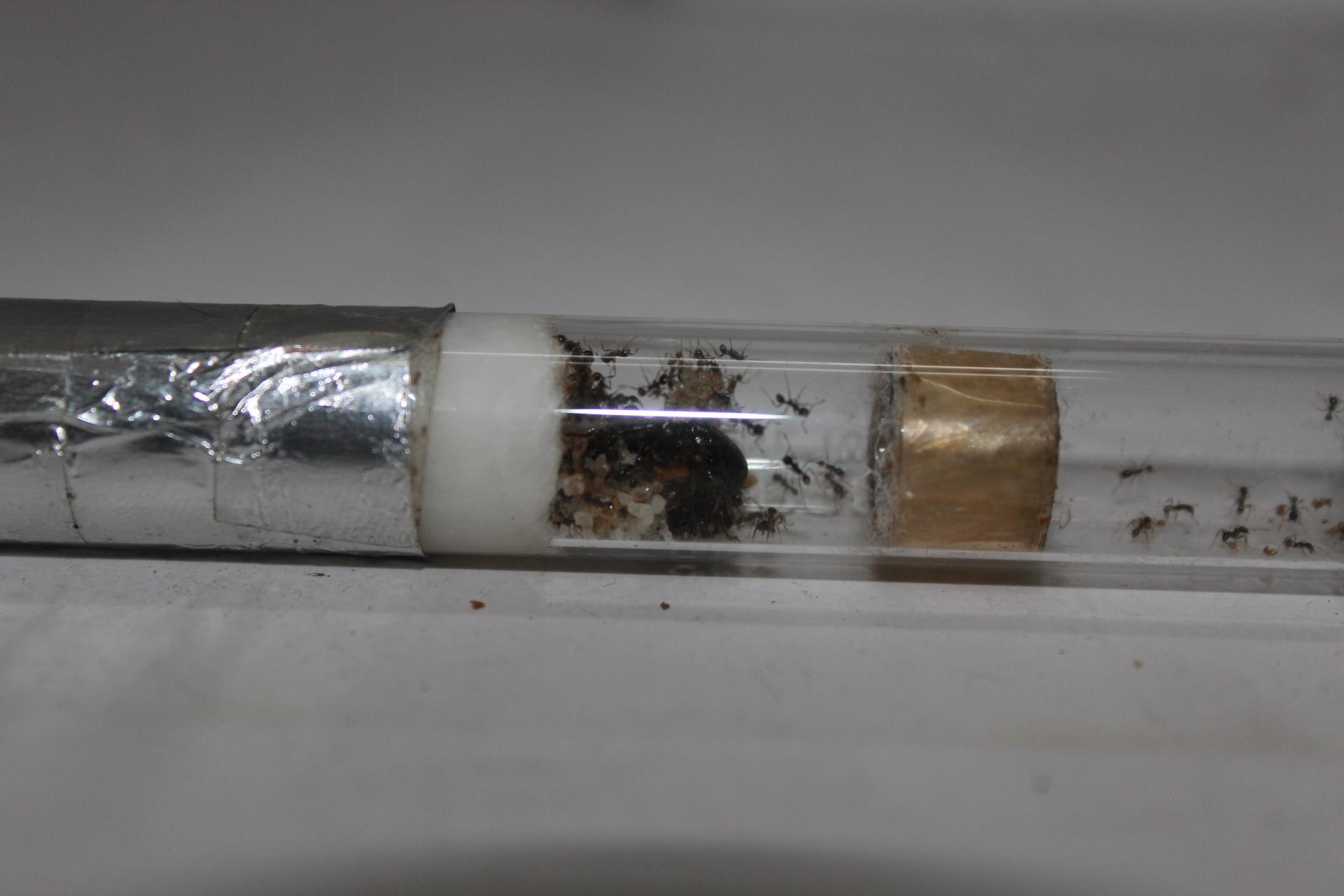- Formiculture.com
- Forums
- Gallery
- Members
- Member Map
- Chat

NotAxo's Carebara Diversa Journal
Started By
NotAxo
, Sep 6 2024 7:58 AM
carebara diversa marauderants agressive ants
2 replies to this topic
#1
 Offline
-
Posted September 6 2024 - 7:58 AM
Offline
-
Posted September 6 2024 - 7:58 AM
This is not an update, but to announce a Very happy news. Some of you may know my C. diversa colony from my Carebara Dicersa dying topic. Well, the colony came around and is now around 80 strong. I will post a update on them tomorrow or the day after.
I believe I am the only one on the forum who has a currently alive colony of C. Diversa ants. I hope you guys are ready for this!!!
P.S even though many say that these ants are very sensitive and require steady and precise temperatures and humidity, I have had no trouble keeping them so far after the incident.
I believe I am the only one on the forum who has a currently alive colony of C. Diversa ants. I hope you guys are ready for this!!!
P.S even though many say that these ants are very sensitive and require steady and precise temperatures and humidity, I have had no trouble keeping them so far after the incident.
- Karma likes this
Currently raising : C. Parius (2x), C. Vitiosus (2x), Carebara Diversa (1x), C. irratians (2x), M. brunnea (1x)
Have raised : Solenopsis
Enjoy anting, NotAxo ![]()
#2
 Offline
-
Posted September 7 2024 - 7:17 PM
Offline
-
Posted September 7 2024 - 7:17 PM
UPDATES (9/8/2024) :
Carebara diversa :
It’s been quite a journey watching these ants settle into their new colonial life. Their beginning was rocky, to say the least. Every time I tried to feed them, whether it was protein or sugar water, it seemed like disaster struck. Workers would die off, and it felt like I was losing the battle before it even began.
Determined to turn things around, I decided to slow down their feedings, waiting until 95% of their pupae had eclosed. By this point, the larvae were ravenous, and the colony had dwindled to about 25 ants. I offered them a piece of mealworm, and their reaction was nothing short of voracious. They attacked it with a kind of frenzied delight, drinking up the gooey liquid with fervor.
As I observed closely, I noticed something remarkable: one of the workers seemed intent on feeding the queen. It would hang under her mandibles and attempt to provide nourishment directly, almost like a portable feeder. This gave me a crucial insight. When I moved the test tube to another spot and checked, I realized that the worker’s head was pressed against the queen’s head, indicating that the stress on the queen might have been the root of the problem all along.
With this new understanding, I increased their protein intake and managed to grow their numbers to around 45-50. I also took the opportunity to replace the excessively stuffed cotton in the test tube with a DIY separator. Using a 5mm diameter tube wrapped in tape, I fashioned a snug-fitting barrier inside the test tube. I coated the sides in baby powder, rubbed off the excess, and inserted it carefully. For feeding, I created a slanted entry tube from 7.5mm tubing, securing it with cotton to prevent escapes.
My mealworms had all morphed into beetles, leaving me with a good supply of 1.2 cm mealworms. Feeding them directly to the ants, I watched with satisfaction as they eagerly consumed the morsels. I fed them every other day, and their numbers grew to a robust 85-95.
The new feeding setup proved effective. I now use the slanted entry tube to deliver mealworms straight to the hungry scouts. At least 10-15 ants gather in the makeshift 'outworld,' where they wrestle with the mealworms until they are subdued and carried to the queen’s chamber. The larvae are fed efficiently, and I only find a few small exoskeleton fragments scattered in the 'outworld' every few days.
Interestingly, I’ve never used any humidity checking or temperature gauges to fine-tune their environment. Everything has been managed based on my prior knowledge and gut feeling, and so far, the ants seem to be thriving. I’m now contemplating their next home—whether to move them to a visible formicarium, a terrarium, or a set of containers with cocopeat and other materials. Although dirt setups have a reputation for being ideal, seeing how well they’ve adapted and grown makes me think a formicarium might work too. I could even implement satellite nests connected by tubing around my room. It’s fascinating to observe how ants navigate their environment in nature, and I hope this setup would encourage similar behavior in captivity.
I’m excited to see how they’ll adapt to a new habitat and what innovations might emerge in their care. This experience has been a learning curve, and I’m eager to continue exploring and refining their environment to help them thrive even further.
- Karma, ANTdrew, rptraut and 2 others like this
Currently raising : C. Parius (2x), C. Vitiosus (2x), Carebara Diversa (1x), C. irratians (2x), M. brunnea (1x)
Have raised : Solenopsis
Enjoy anting, NotAxo ![]()
#3
 Offline
-
Posted September 8 2024 - 3:42 AM
Offline
-
Posted September 8 2024 - 3:42 AM
Very nice progress!
"The ants are a people not strong, yet they prepare their meat in the summer." Prov. 30:25
Keep ordinary ants in extraordinary ways.
Keep ordinary ants in extraordinary ways.
Also tagged with one or more of these keywords: carebara diversa, marauderants, agressive, ants
 |
Market Place →
General Market Place →
Trachymyrmex Septentrionalis leafcutter ants for sale very soon texas only.Started by Moldy_Leafcutter , Yesterday, 5:03 AM |
|

|
|
 |
Ant Keeping →
General Ant Keeping →
Can I feed my ants outside bugs?Started by Entomologyants , Mar 20 2025 |
|

|
|
Anting →
Ant ID Requests →
Yet another IDStarted by AntsGodzilla , Nov 26 2024 |
|

|
||
Ant Keeping →
Ant Keeping Journals →
JenC's Manica invidia JournalStarted by JenC , Nov 25 2024 |
|

|
||
 |
Ant Keeping →
Ant Keeping Journals →
The Bulldozers (Pheidole Bicarinata)Started by AntsGodzilla , Nov 16 2024 |
|

|
1 user(s) are reading this topic
0 members, 1 guests, 0 anonymous users




